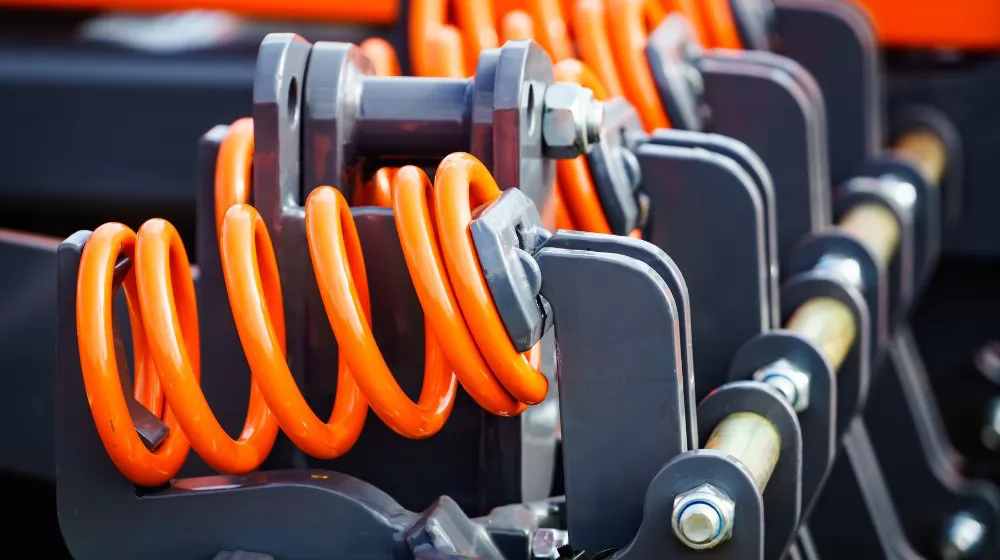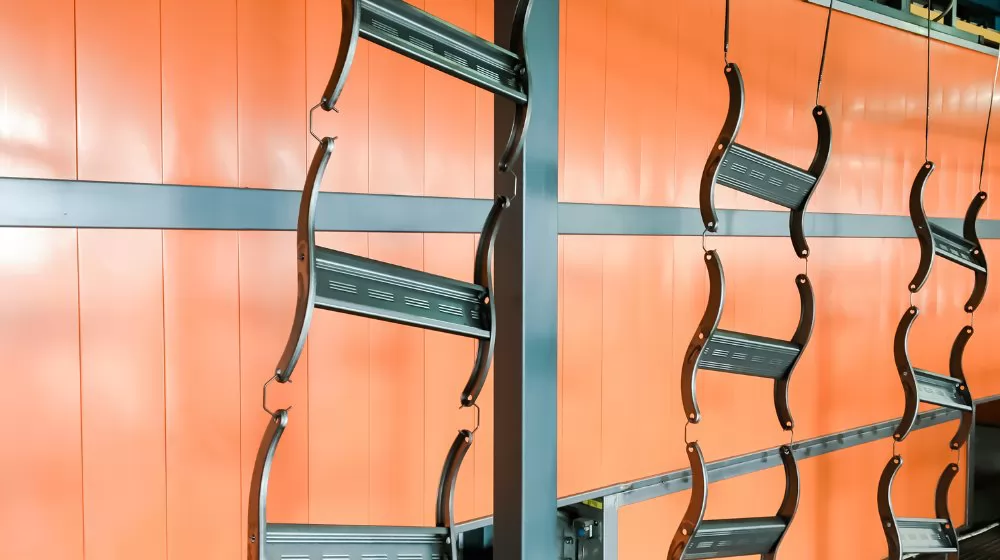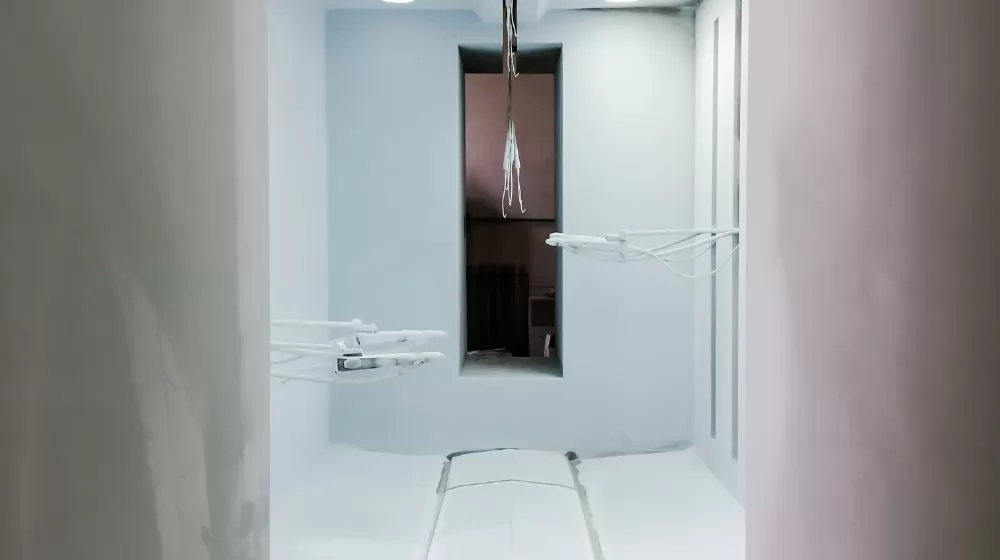
.png)

.png)
.png)


-
.png) 0086-757-85407388
0086-757-85407388 -

-
 terrychen@wintoly.com
terrychen@wintoly.com


.png)

.png)
.png)


.png)




Thermoset powder coatings have revolutionized various industries with their robust performance, cost-effectiveness, and eco-friendly properties. This comprehensive guide will delve into what thermoset powder coating is, its benefits, manufacturing process, applications, and the future trends in this dynamic field. As a leading powder coating manufacturer, Wintoly is here to enlighten you with all you need to know about thermoset powder coatings.
Powder coating, a durable and high-quality finish found on thousands of products, is increasingly popular. But what exactly makes it a favorite among manufacturers? Let's delve into the reasons.
Firstly, powder coating is known for its superior durability. When compared to traditional painting methods, powder coating tends to last significantly longer. The strength of this finish ensures that it is resistant to chipping, scratching, and other forms of wear and tear, lending to its longevity.
Moreover, powder coating offers a wide range of finishes and textures. Manufacturers can choose from matte, semi-gloss, gloss, and high gloss finishes as well as various textures such as smooth, wrinkled, and rough. This versatility allows manufacturers to customize their product's aesthetic while maintaining the product's durability.
In addition, the process of powder coating is environmentally friendly. It contains no solvents and emits minimal, if any, volatile organic compounds (VOCs). Hence, it aligns with the growing trend of eco-conscious manufacturing.
Comprehending the service life of powder coatings is vital for both manufacturers and consumers alike, mainly for three reasons: economic consideration, maintenance planning, and sustainability efforts.
From an economic standpoint, understanding the service life helps manufacturers gauge the cost-effectiveness of their product. A longer-lasting coating means less frequent reapplications, reducing the long-term costs associated with product maintenance and potentially increasing the product's value.
Maintenance planning is another aspect where service life plays a pivotal role. By knowing how long a powder coating will last, manufacturers can offer accurate guidance to consumers on when maintenance or recoating may be needed. This ensures the product remains in optimal condition throughout its lifespan, enhancing customer satisfaction.

The application of powder coating is a multi-step process that requires careful preparation and precise execution. The exact process may vary depending on the material of the surface, but generally, it involves these key steps: preparation, application, and curing.
Preparation is the first and arguably the most critical step. The surface must be thoroughly cleaned and treated to ensure optimal adhesion of the coating. This might involve sandblasting, chemical treatments, or simple washing and drying, depending on the surface material and its condition.
Following preparation, the powder coating is applied using a spray gun, which imparts an electrostatic charge to the powder particles. This charge causes the powder to adhere to the surface, forming an even layer. The thickness of the coating can be controlled by adjusting the application process.
After the application, the coated object is moved into a curing oven. Here, the powder melts and bonds to the surface, creating a hard and durable finish. The exact time and temperature for curing will depend on the type of powder and the specifications of the manufacturer.
While the process outlined above is common for many materials, certain surfaces may require additional steps or considerations. For instance, applying powder coating to non-conductive surfaces like plastic or glass requires a pre-coating with a conductive primer. Similarly, certain metals may require a specific type of pretreatment to ensure proper adhesion.
Various factors can impact the lifespan of powder coatings, including environmental conditions, the preparation of the substrate, and the thickness of the coating itself.
Environmental elements like sunlight, temperature fluctuations, humidity, and exposure to chemicals can affect the durability of powder coatings. For instance, continuous exposure to ultraviolet (UV) rays can cause the coating to fade or lose its gloss over time. Similarly, high humidity or exposure to harsh chemicals can accelerate corrosion, affecting the powder coating's longevity. Therefore, for products exposed to such conditions, selecting a powder coating designed to withstand these environmental factors is crucial.
Proper substrate preparation is key to the longevity of a powder coating. The surface must be thoroughly cleaned and treated to remove any dust, rust, or oils that could interfere with adhesion. A poorly prepared surface can lead to issues like peeling or flaking, significantly reducing the coating's lifespan.
The thickness of the powder coating also plays a significant role in its durability. A thicker coating generally offers better protection and is more resistant to chips, scratches, and wear and tear. However, if the coating is too thick, it may crack or peel. Therefore, it's important to achieve an optimal thickness that ensures both durability and aesthetic appeal.

Service life, or the expected lifespan of a powder coating, can vary widely based on a multitude of factors we've previously explored, such as environmental conditions, substrate preparation, and coating thickness.
On average, a properly applied powder coating on an appropriately prepared surface can be expected to last between 15 to 20 years, although superior-grade powder coatings can last up to 25 years or more. Factors such as whether the coated item is used indoors or outdoors, and the severity of the environmental conditions it's exposed to, can influence this lifespan.
One notable case study demonstrating the durability of powder coating involves outdoor furniture. High-quality powder-coated furniture can withstand years of use and exposure to the elements without significant degradation of the coating. The vibrant colors and finish remain intact, demonstrating the excellent durability and color retention of powder coatings.
Another example can be seen in the automotive industry. Powder-coated wheels are exposed to harsh conditions, including road debris, harsh weather, and chemicals like salt and brake dust. Yet, these coatings typically remain intact and vibrant for many years, once again attesting to the durability of powder coatings.

Despite their durability, certain circumstances and conditions can significantly reduce the service life of powder coatings. Here are some key factors that can lead to a shortened lifespan:
Incorrect application of powder coatings can negatively impact their performance and durability. This includes poor surface preparation, incorrect coating thickness, or improper curing process. Each of these factors can compromise the adhesion of the coating, leading to problems such as peeling, blistering, or premature wear and tear.
While powder coatings are generally resistant to many chemicals, continuous or excessive exposure to certain harsh chemicals or solvents can degrade the coating. This might result in discoloration, loss of gloss, or even physical damage to the coating, thereby reducing its lifespan.
Physical damage such as scratches, dents, or impact can also shorten the service life of powder coatings. Any damage that penetrates the coating can expose the underlying substrate, making it vulnerable to corrosion or further damage. This not only affects the aesthetic appeal but can also accelerate the degradation of the coating.

Although powder coatings are known for their durability and long life, proper maintenance can further extend their lifespan. Here are some essential care tips and techniques:
Regular cleaning is one of the most effective ways to maintain and extend the life of powder coatings. It's recommended to clean powder coated surfaces periodically using a mild detergent and warm water. Rinse thoroughly after washing and dry completely to prevent streaks or water spots. Avoid using harsh chemicals or abrasive materials for cleaning as they can damage the coating.
Address any damage or issues with the powder coating as soon as they are noticed. This could include chipping, cracking, or peeling. There are specific powder coating repair kits available that can help restore the coating and prevent further degradation. In severe cases, it might be necessary to strip and reapply the coating.

The longevity of powder coatings can also significantly depend on the environment in which the coated object is situated. Different environments pose different challenges and conditions that can affect the powder coating's durability. In this section, we'll focus on indoor environments.
When it comes to indoor applications, powder coatings can perform exceptionally well and last for many years, sometimes even decades. They're typically exposed to less severe conditions compared to their outdoor counterparts, with minimal exposure to harsh weather elements such as UV rays, rain, snow, or extreme temperature fluctuations.
However, it's important to consider factors such as humidity levels, temperature control, and potential exposure to chemicals or physical damage. Indoor environments like industrial facilities or commercial kitchens, where there may be exposure to heat or chemicals, could pose challenges.

Powder coatings are versatile and can be used across a wide range of applications and materials. The service life of these coatings can vary depending on the type of substrate they're applied to. Let's examine some common substrates:
Powder coatings are often applied to metal surfaces because of their strong adhesion and resistance to corrosion. When properly applied and maintained, these coatings can last for decades on metal substrates. On materials like wood and plastic, the durability of powder coatings can be slightly less due to the different surface properties. These substrates may require special pretreatment to ensure good adhesion of the coating.
In certain industries, the service life of powder coatings can be affected by the unique conditions of the operational environment. For instance, in the automotive industry, powder coatings must resist impacts, chemicals, and extreme weather conditions. Similarly, in the food industry, they must be able to withstand frequent cleaning and sanitizing agents. Understanding these specific requirements can help in selecting the right type of powder coating and ensuring its longevity.
To ensure that powder coatings meet the required durability and performance standards, they undergo rigorous testing. Understanding these standards and certifications can provide assurance of the coating's quality and longevity.
Several industry standards are used to evaluate the performance of powder coatings. These include tests for hardness, adhesion, corrosion resistance, and impact resistance, among others. Weathering tests, both natural and accelerated, are also conducted to assess the coating's resistance to environmental factors such as UV rays, humidity, and temperature variations.
Certifications from accredited organizations provide an assurance of quality and compliance with industry standards. For example, a powder coating might be certified by organizations such as the American Architectural Manufacturers Association (AAMA), which provides certifications for coatings used in architectural applications. These certifications indicate that the coating has met stringent performance criteria and undergone rigorous testing, providing confidence in its durability and quality.

Selecting a reputable powder coating manufacturer is essential to ensure the durability and quality of the product. Here are some considerations when making this crucial choice:
Firstly, look for a manufacturer with a proven track record in the industry. They should have years of experience and a portfolio of successful projects. Check customer reviews and ask for references to gauge their reputation.
Secondly, the manufacturer should offer a wide range of products to meet various needs. They should be able to provide different types of powder coatings suitable for different substrates and environments.
Lastly, the manufacturer should provide comprehensive support and services, including guidance on application, maintenance, and troubleshooting. A strong after-sales service team and technical support are indicators of a reliable manufacturer.
With its diverse benefits and broad industry applications, thermoset powder coating is undoubtedly a game-changer in coating solutions. As technology continues to advance, we can look forward to even more innovations and improved performances in this sector. At Wintoly, we pride ourselves as a leading powder coating manufacturer, offering a wide array of high-quality custom powder coating solutions tailored to your needs. Contact us today to explore how our thermoset powder coatings can help elevate the longevity, aesthetics, and functionality of your products.
Read More:
Top 10 Powder Coating Companies in the World 2023
Thermoset Powder Coating: A Comprehensive Guide

 terrychen@wintoly.com
terrychen@wintoly.com
.png) 0086-757-85407388
0086-757-85407388
 6 Chaoyang Rd., National Demonstration Eco-industrialzone, Nanhai, Foshan,Guangdong,China
6 Chaoyang Rd., National Demonstration Eco-industrialzone, Nanhai, Foshan,Guangdong,China

.png)
